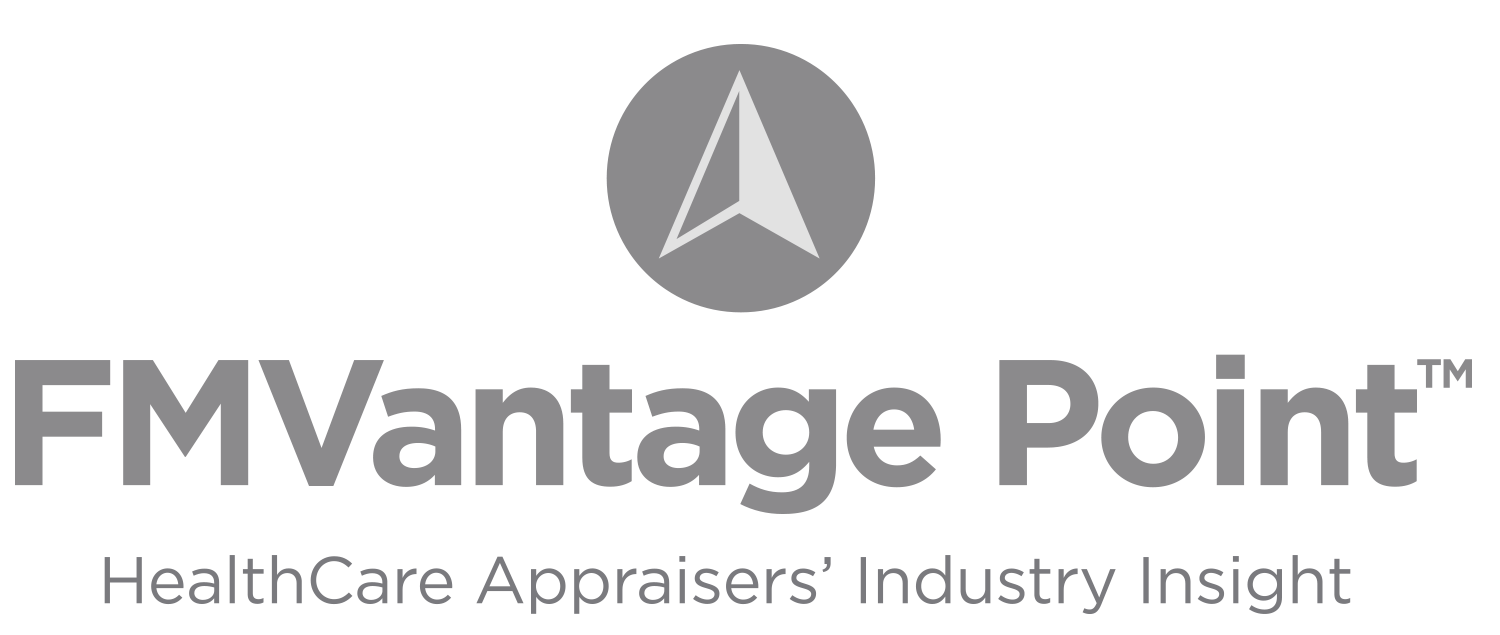Rising interest rates, elevated inflation, and economic uncertainty led to volatility in 2022, and many of these factors remain in place heading into 2023. While inflation appears to have peaked and is trending lower, the full impact of the rapid rise of interest rates has yet to be felt throughout the broader economy. Heading into 2023, questions linger about the path ahead for interest rates, and whether the United States economy will enter a recession.
Within the healthcare industry, valuation multiples and stock prices for public companies declined along with the broader market in 2022. Although the public markets had a difficult year, healthcare M&A activity continued at a robust pace in 2022 (with the exception of hospital M&A, which hit multi-year lows), with deal volume increasing year-over-year compared to 2021.[1] The following charts present the enterprise value-to-EBITDA multiple for the S&P 500 Health Care Sector Index (HCX)[2] and the yield on 10-year United States Treasuries[3] throughout 2022.
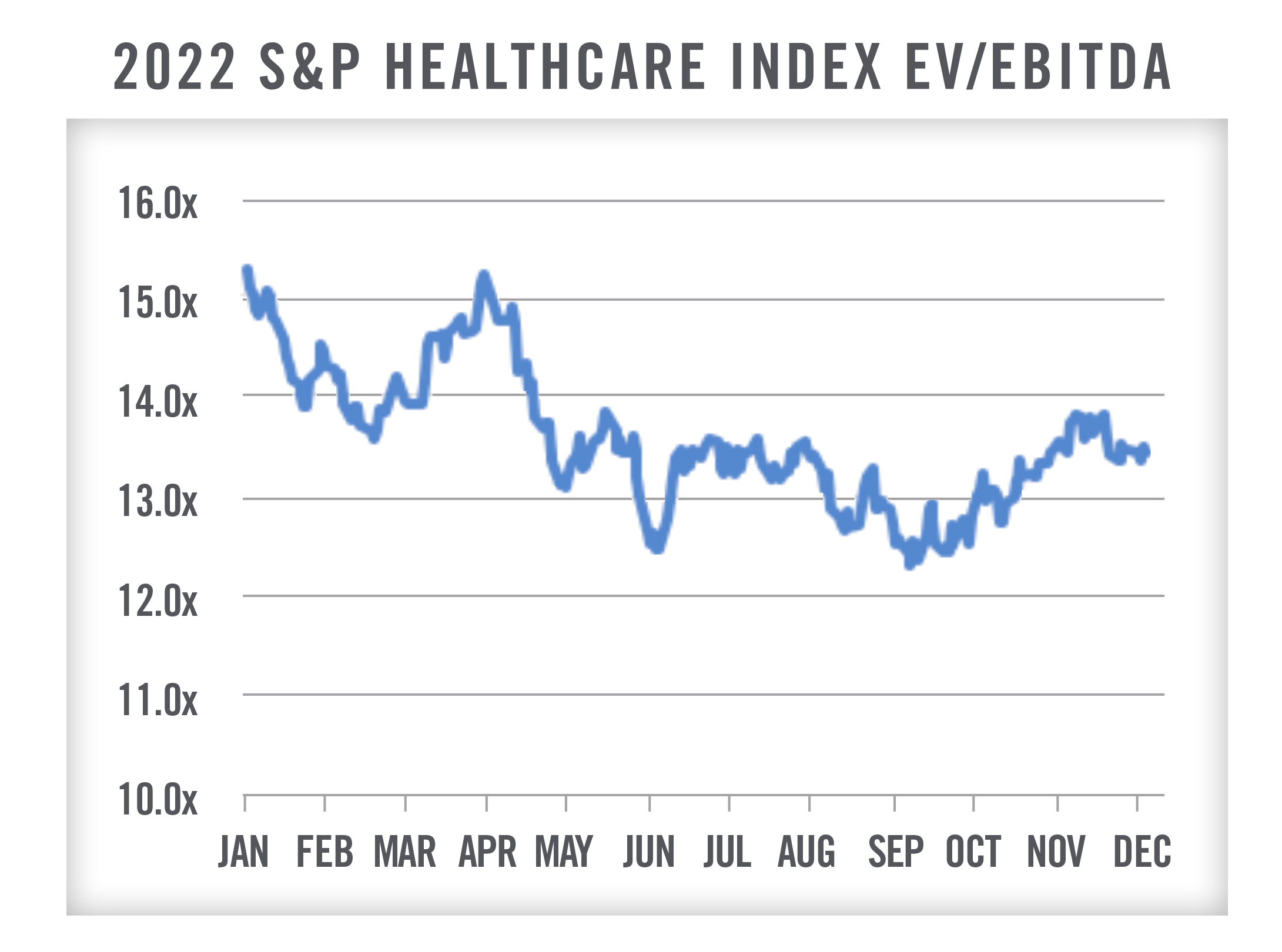
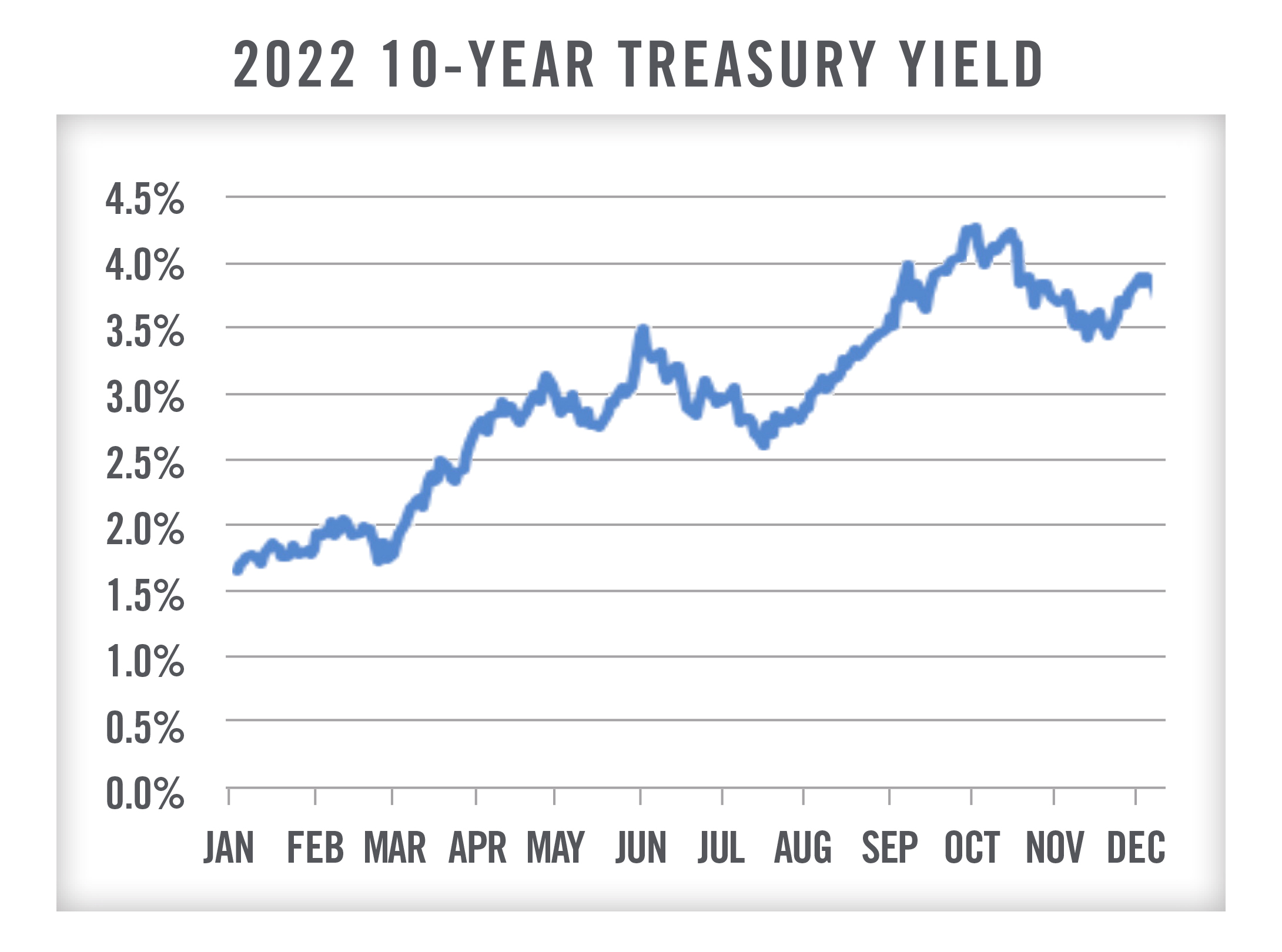
![]() KEY QUESTIONS FOR 2023
KEY QUESTIONS FOR 2023
Will Physician Practice Consolidation Activity Continue?
As previously mentioned, despite the economic and financial market headwinds in 2022, healthcare M&A volume remained strong with many of the trends from past years continuing. Physician practice transactions remained a key driver of overall healthcare deal volume in 2022. Driven primarily by private equity physician practice management (PPM) transactions, physician practices comprised 30 percent of total healthcare deal volume in 2022. Looking to 2023, several factors could affect deal volume, including higher cost of capital for private equity groups, economic uncertainty, and recent Medicare reimbursement cuts that could impact budgets for 2023 and lead to fewer health system acquisitions. However, many market participants expect physician practice deal volume to remain robust for a variety of reasons, such as the desire to consolidate within specific specialties, and the continued focus from health systems to expand their physician networks (discussed in more detail in following sections).
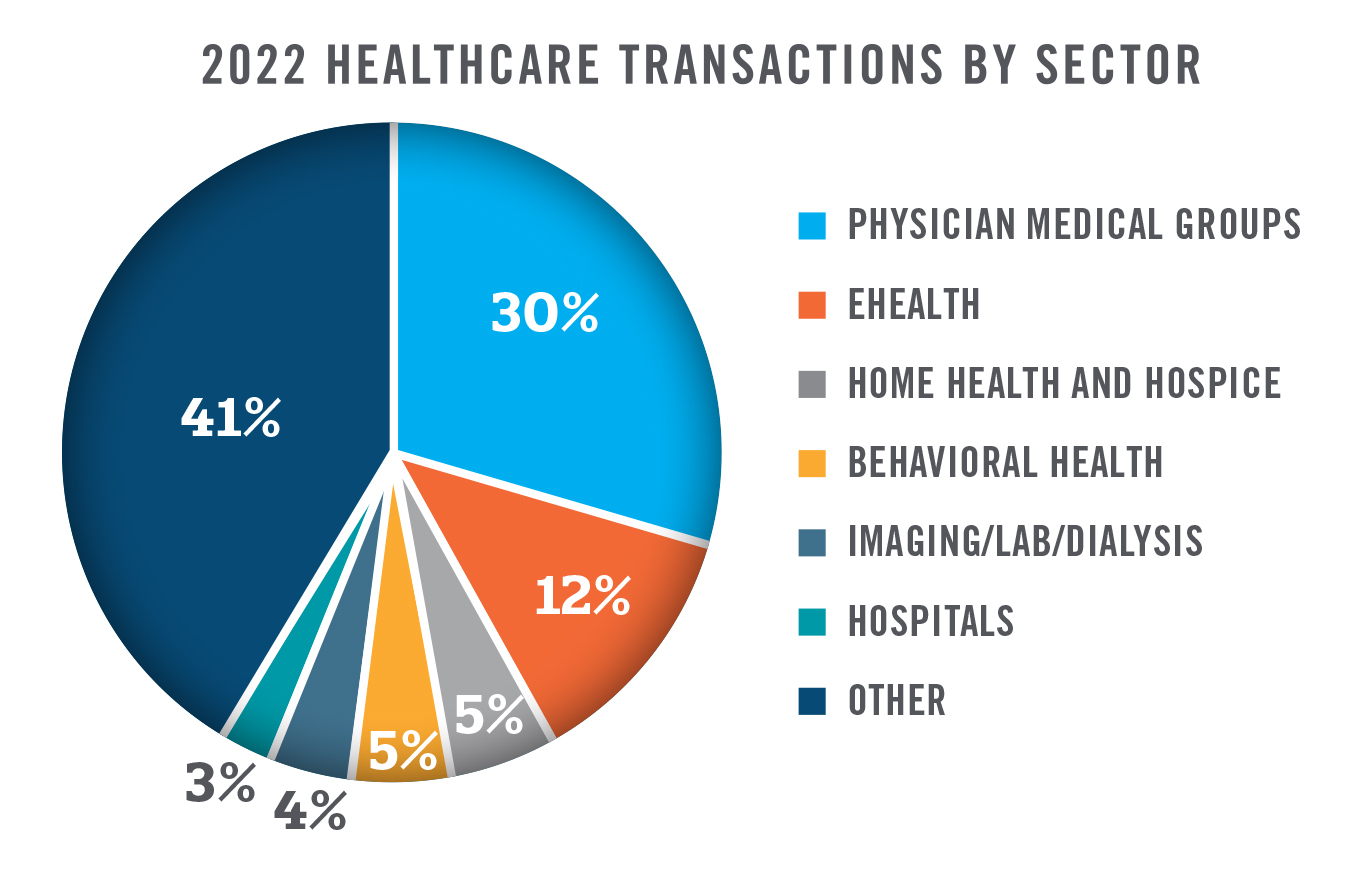
In terms of medical specialties, we anticipate high levels of activity to continue in orthopedics, cardiology, and gastroenterology, among others. Private equity activity in the orthopedics space has been growing in recent years and we have observed valuation multiples increase to the low double-digit range for orthopedic practices. While the specialties of ophthalmology and dermatology will likely continue with a high volume of deal activity, we also expect to continue to see large platforms transact as these specialties have been undergoing consolidation since the early 2010’s. We also continue to hear from clients, and have observed in the marketplace, strong interest in behavioral health providers. The following table presents transaction volume by specialty for 2022.[4]
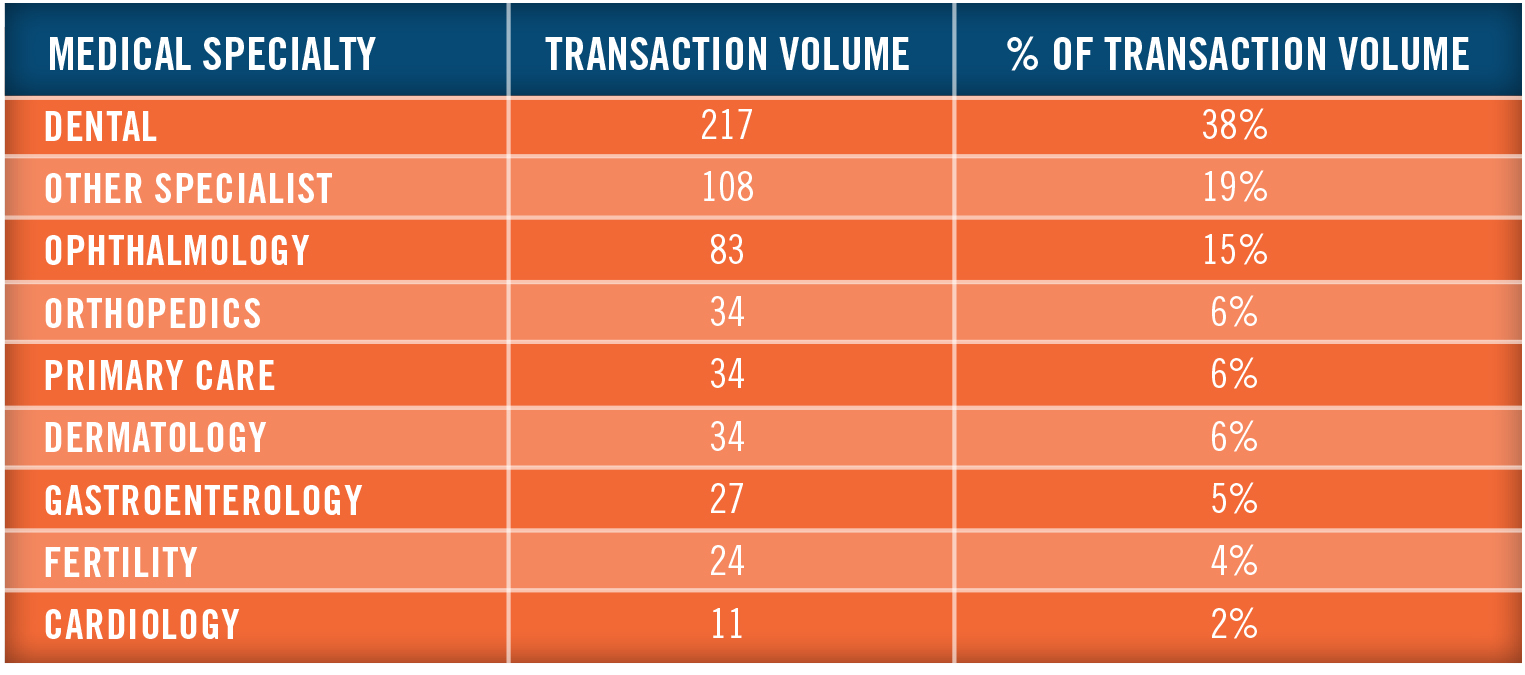
While private equity has been driving the majority of the deal volume in the physician practice sector, we have worked with health systems that are increasingly interested in competing with private equity for certain transactions. We have observed health systems implementing, or considering, ownership models of practices at either the controlling or non-controlling level where physicians maintain an ownership interest and retain a higher degree of autonomy and governance. While these models do not include rollover equity like private equity PPM transactions, they may include profit-based compensation plans, and typically leverage the system’s payor contracts and supplies arrangements. Historically, many large hospitals and health systems have structured physician practice acquisitions based on tangible asset value plus an increase in go forward compensation for the selling providers (and employed providers). With private equity and other buyers active in the industry, hospitals and health systems have had difficulty competing given the multiples other acquirers are willing to offer. In order to close transactions, hospitals and health systems are increasingly willing to pay practices for intangible assets that they may not have considered in the past. Attributes that contribute to intangible value at physician practices include a large number of employed providers, difficult to recreate practices, ancillary revenue streams, favorable contracts, and other unique situations. The following graphic presents intangible assets that are commonly valued in connection with health system-led physician practice acquisitions.
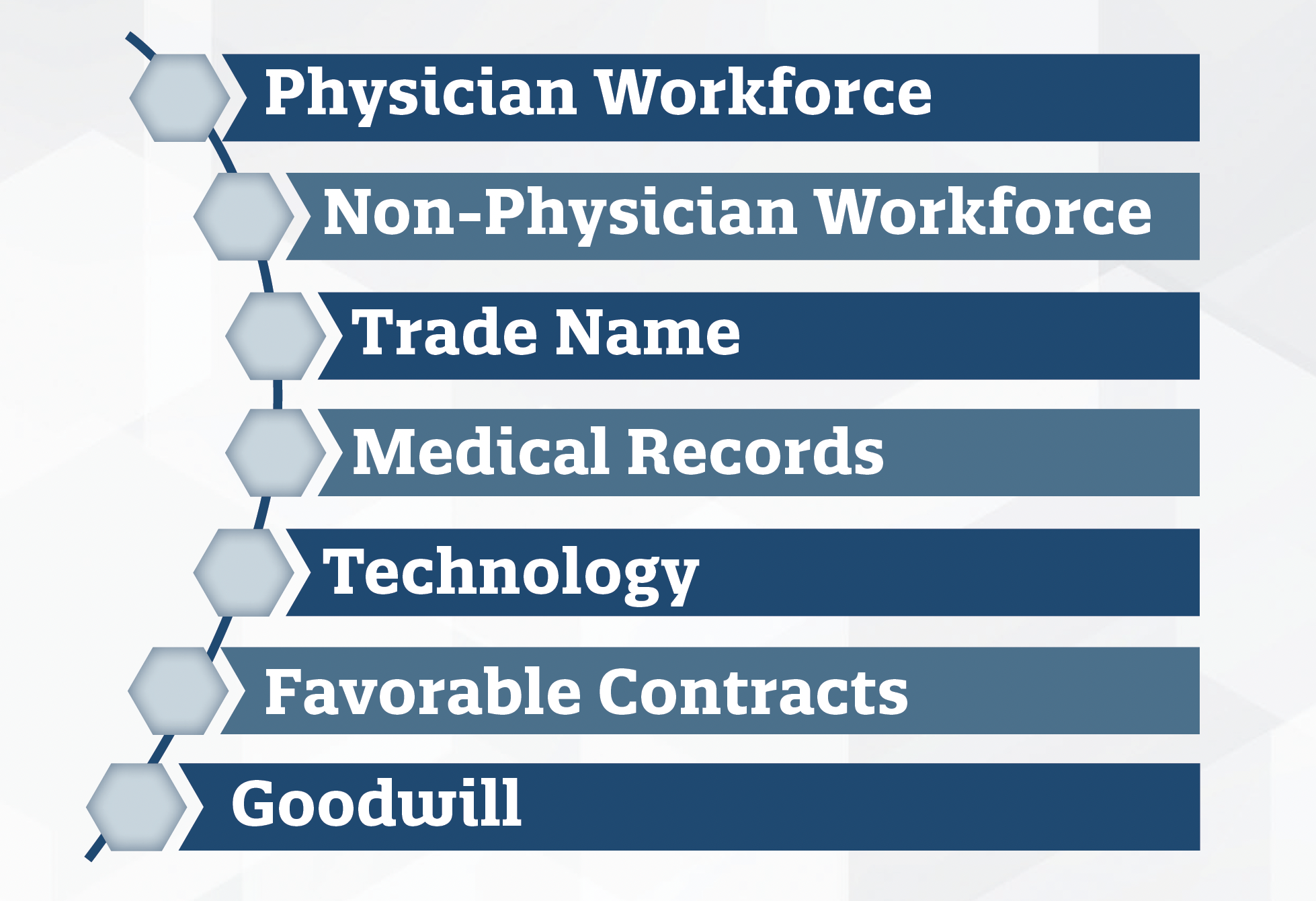
What Will Happen to Valuation Multiples?
While public market valuation multiples declined by approximately 12 percent, the average healthcare transaction multiple declined by approximately 9 percent in 2022.[5] While every transaction is unique, declines in valuation multiples across the industry are largely attributable to higher interest rates, coupled with the fact that many subsectors of the healthcare industry had seen valuation multiples reach elevated levels in recent years.
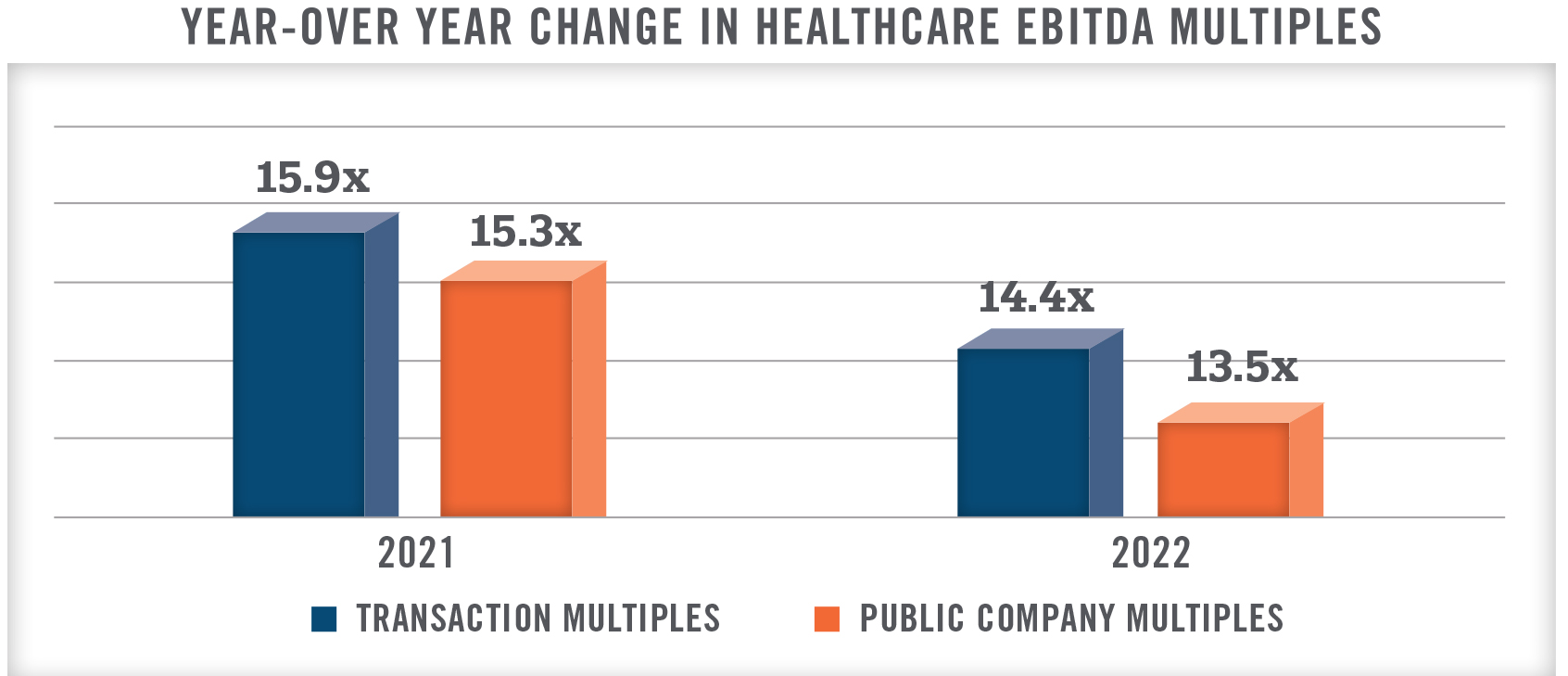
The outlook for interest rates suggests the cost of capital will continue increasing, with many projections from Wall Street firms as well as the Federal Reserve’s “dot plot” suggesting short term rates increasing to 5 percent in 2023.[6] In addition, the full impact of higher rates has not made its way through the economy yet as many borrowers took advantage of lower interest rates prior to the recent increases. While these factors suggest that valuation multiples are likely to be flat or lower interest in 2023, we note that many buyers we work with are strategic in nature and the scarcity of certain types of providers in certain markets leads to competition for deals. In our view, examples of assets that are unlikely to see lower valuations in 2023 include platformsize physician practices (particular those in orthopedics and gastroenterology), orthopedic-focused or other highly profitable surgery centers, and women’s care/IVF focused businesses, among others. Amongst newer, unprofitable healthcare companies, we believe many that are raising capital in 2023 will experience down rounds (raising capital at lower valuations than prior capital raises) or be acquired in distressed sales.
Home Health and Hospice
The M&A landscape in home health and hospice in 2022 was characterized by a decline in overall volume, but two large transactions led to higher overall deal value in 2022 compared to 2021. The UnitedHealth acquisition of LHC Group and the CVS acquisition of Signify Health represented approximately $14 billion in total transaction value that caused overall deal value to increase more than 70 percent, even though volume fell by more than 25 percent.[7] Looking ahead to 2023, market participants expect a rebound in deal volume given the high level of interest in Medicare certified home health and hospice, as well as private duty nursing and personal care, from private equity and other strategic buyers. The following chart presents the share price increase or decrease for each of the publicly traded home health and hospice operators for 2022. We note that CVS announced its intended acquisition of Signify Health in September of 2022.

Public Physician Practice Management/Medicare Advantage
2022 was an exciting year for the publicly traded companies focused on value-based care and physician services, and we expect more activity in this sector in 2023. Cano Health (CANO) was in discussions to be acquired by CVS or Humana, although neither company closed a transaction, and more recently, CANO’s debt was downgraded by Moody’s and it has been rumored to be nearing bankruptcy. Oak Street Health (OSH) is currently in discussions to be acquired by CVS for approximately $10 billion, according to Bloomberg,[8] and Amazon announced plans to acquire One Medical (ONEM) in July of 2022. While not publicly traded, Carbon Health recently raised $100 million from CVS at an undisclosed valuation, although we note the investment came shortly after Carbon Health announced a large layoff. The ability to achieve rapid scale in a sector that is critical in the shift to value-based care is likely to lead to additional interest in the sector from large acquirers in 2023. With the stock prices of many operators down more than 40 percent in 2022, potential acquirers may view these companies as offering an attractive entry point.
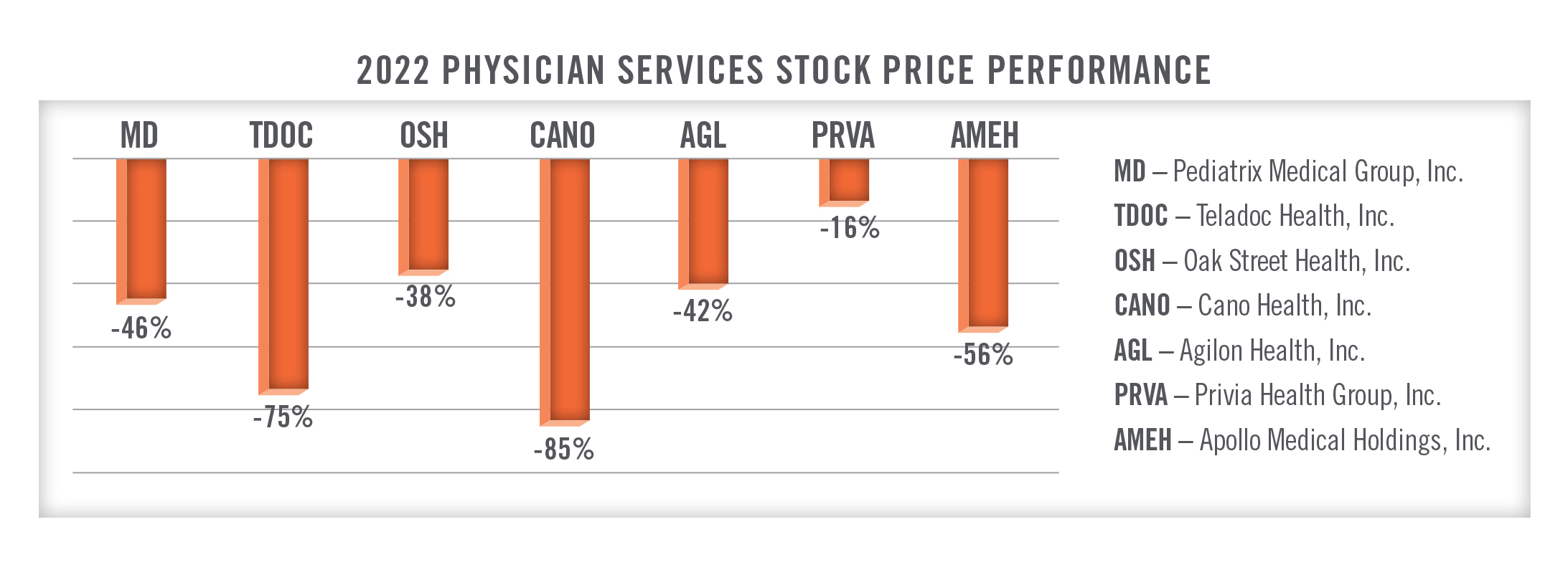
Will Deal Structures Be Impacted by Higher Interest Rates?
In our work with startups and early-stage companies, we have observed a push in recent months towards acquisitions requiring less upfront cash, as these entities enter an environment where raising capital becomes more difficult. Alternative deal terms we have seen include stock transactions, long-term promissory notes, and a higher percentage of consideration pushed into an earnout structure, among others. With capital markets tighter than they have been in recent years, early-stage companies will likely continue to focus on conserving cash and look to implement deal structures that help accomplish this goal. We have also observed increased use of right of first refusals (“ROFRs”) and call options, including long-term call and put options, by prospective buyers. These ROFRs and options enable acquirers to conserve cash and push potential acquisitions to a later date with less risk of losing out on the transaction.
For more information, please contact:
Daniel I. Levin, CFA, ASA, Director at dlevin@hcfmv.com or (303) 566-3177
Nicholas J. Janiga, ASA, Partner at njaniga@hcfmv.com or (303) 566-3173
[1] LevinPro HC, Levin Associates, 2023, February, levinassociates.com
[2] S&P Capital IQ
[3] FRED; Federal Reserve Bank of St. Louis
[4] LevinPro HC, Levin Associates, 2023, February, levinassociates.com
[5] Pwc.com; https://www.pwc.com/us/en/industries/health-industries/library/health-services-deals-outlook.html
[6] Federal Reserve; https://www.federalreserve.gov/monetarypolicy/files/fomcprojtabl20221214.pdf
[7] Pwc.com; https://www.pwc.com/us/en/industries/health-industries/library/health-services-deals-outlook.html
[8] Bloomberg; https://www.bloomberg.com/news/articles/2023-01-09/cvs-is-said-to-explore-acquisition-of-oak-street-health

